
Geranium renardii
June is for geraniums. June is also for honeysuckles, climbing roses and stewartias, but I’m trying to keep this blog to a reasonable size. After the lull in mid-May when the rhododendrons, early herbaceous perennials and late bulbs take a needed breath, June is when the summer flowers really start coming into their own. This month stands apart not only for the impressive diversity of plants in flower, but also the sheer volume of blooms in the Garden. And among the tough, long-lived perennials, there few better examples of this bounty than in the hardy geraniums. Also known as cranesbills because of the resemblance of their seed capsules to a crane’s bill, there are more than four hundred species across the Northern Hemisphere and southern Africa, and these include annuals, biennials and perennials. Some thirty-five species, selections and hybrids scattered around the Botanical Garden. The common names also help to differentiate them from the tender geraniums of commerce, which are, of course, the pelargoniums (genus Pelargonium). Cranesbills are known for their often brightly coloured, rose, pink, violet and purple-blue, five-petaled, wide-opening flowers. They are also valued for their clean, verdant foliage and often enthusiastic behaviour, which suits well the space and informality of much of the Botanical Garden.
In the Asian Garden, look for the mats of mixed Geranium himalayense and Geranium platypetalum at the top of the slope next to the David C. Lam entrance boulder (strictly G. platypetalum on the west side of the path). Although geraniums are often inter-fertile, and both species are known to make hybrids with other species (more on that later), these two have always behaved themselves (reproductively speaking). The Himalayan species has a slightly brighter, glossier upper leaf surface, while the darker leaves of G. platypetalum, like its stems, stalks and buds, are noticeably covered with fine white hairs. Both species have violet blue flowers, though those of G. himalayense are somewhat bluer. Further along Upper Asian Way are a couple of plantings of the Armenian cranesbill, Geranium psilostemon. This species is later to flower (mid to late June) and justly famous for its large basal leaves, long, slender flower stalks and striking, black-centred, magenta-pink flowers. Look for it in amongst the Rosa x odorata ‘Mutabilis’ at the corner of Upper Asian Way and Stearn Trail and again just south of the Moon Gate in the bed on the west side of Upper Asian Way. The name psilostemon means “with slender stems.” There are several geraniums in the large moisture-retentive beds that flank Upper Asian Way near Staunton Trail. The most conspicuous is Geranium pratense, which is known as the meadow cranesbill (the Latin pratense means “of meadows”). Native across most of Europe and Asia, it is the quintessential hardy geranium with its divided palmate leaves, long-blooming, pale, lavender-blue to purple-blue flowers and sprawling, angular stems. More than a few popular garden selections and hybrids are derived from this species, including a compact, long-blooming, double-flowered selection known as ‘Plenum Violaceum’, individuals of which are scattered through this area.
More geraniums await your consideration in the East Gardens. A rather large patch of Geranium macrorrhizum (bigroot cranesbill) dominates the top of the east-facing Pavilion bed above the Food Garden. There are a few other locations where this geranium is employed, including on the northwest side of the Roseline Sturdy Amphitheatre and near the entrance to the BC Rainforest Garden. This highly aromatic, weed-suppressing, aggressively rhizomatous species has sticky-glandular leaves and stems, and large rosy-pink flowers that rise a few centimetres above the handsome foliage. It is a useful ground cover (for one, it tolerates dry shade) and our gardeners use it liberally in larger beds where a sturdy, temporary ground cover is required. When the time comes, the shallow rhizomes allow for easy removal. Like a number of cranesbills, it will bloom a second time after being cut down following its first flowering.
The eastern North American Geranium maculatum (spotted geranium) finds a home in the Carolinian Forest Garden. A tall woodlander, G. maculatum has deeply cleft leaves and attractive purplish flowers. A dark-leaved, pink-and-white flowered selection, Geranium maculatum ‘Espresso’ has a prominent position in the Contemporary Garden. There are too many geraniums in the E. H. Lohbrunner Alpine Garden to mention them all, but a number are stand-outs. The European section in particular is good territory for cranesbills. Look for the close relatives, selections and hybrids of the comparatively diminutive and compact-growing Geranium sanguineum (bloody cranesbill) and Geranium subcaulescens (grey cranesbill) here. Some of these may already have completed their initial spring bloom period, but like most cranesbills there are usually a few flowers generated after the main event. By the way, the name “bloody cranesbill” does not imply frustration with an overly weedy plant; rather, it is for the reddish flowers—the Latin sanguine means “bloody” (they are pink to purple, really).
Only visible from the small lawn area at the foot of the European section of the Alpine Garden is the creeping, Geranium dalmaticum (Dalmatian cranesbill), a rock-garden plant sought after for its small leaves, low, creeping habit and bright cerise pink flowers. As lovely as it is, Dalmatian cranesbill is probably more famous as one of the parents of the Cambridge cranesbill, Geranium x cantabrigiense (whose other parent is G. macrorrhizum). The G. ´ cantabrigiense cultivar ‘St. Ola’, which forms tight mats of attractive, red-tinged glossy foliage and has white flowers, is given consistently high ratings by garden writers. Another popular garden hybrid, Geranium ‘Philippe Vapelle’, forms a mound at the base of the slope in the European section along the service road. This cultivar is grown as much for its ample and nubbly-soft-grey foliage as for its purple-veined, mauve flowers. Its parents are Geranium renardii and G. platypetalum. Several examples of G. renardii line the European side of the main path between the European and North American sections, and also the western path through the Asia Minor section. Renard’s cranesbill is much the miniature version of ‘Philippe Vapelle’, but with a more creeping, not mounding habit and with purple-veined, white flowers.
This is but a small sampling of the Garden’s geranium offerings. And note that the Garden Centre at the Shop in the Garden stocks an impressive number of excellent cranesbills. Many are propagated in-house, by the Friends of the Garden.
- Geranium dalmaticum
- Geranium macrorrhizum
- Geranium maculatum ‘Espresso’
- Geranium Philippe Vapelle
- Geranium Philippe Vapelle
- Geranium platypetalum
- Geranium pratense
- Geranium psilostemon
- Geranium renardii
- Geranium renardii
- Geranium sanguineum Little Bead
- Geranium sanguineum
- Geranium sanguineum
- Geranium subcaulescens
- Geranium x cantabridgiense ‘St-Ola’
- Geranium maculatum
Submitted by: Douglas Justice, Associate Director, Horticulture and Collections

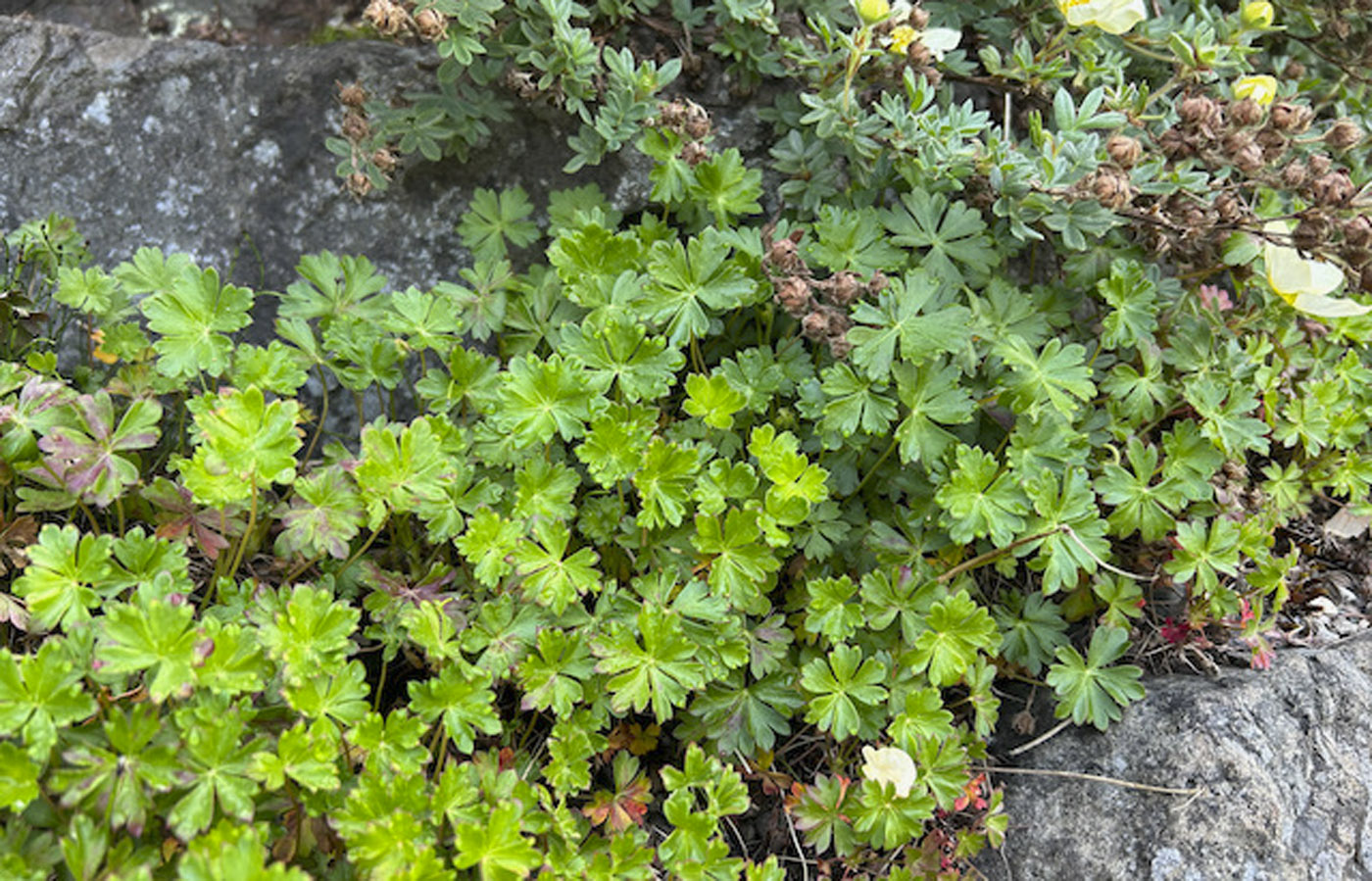



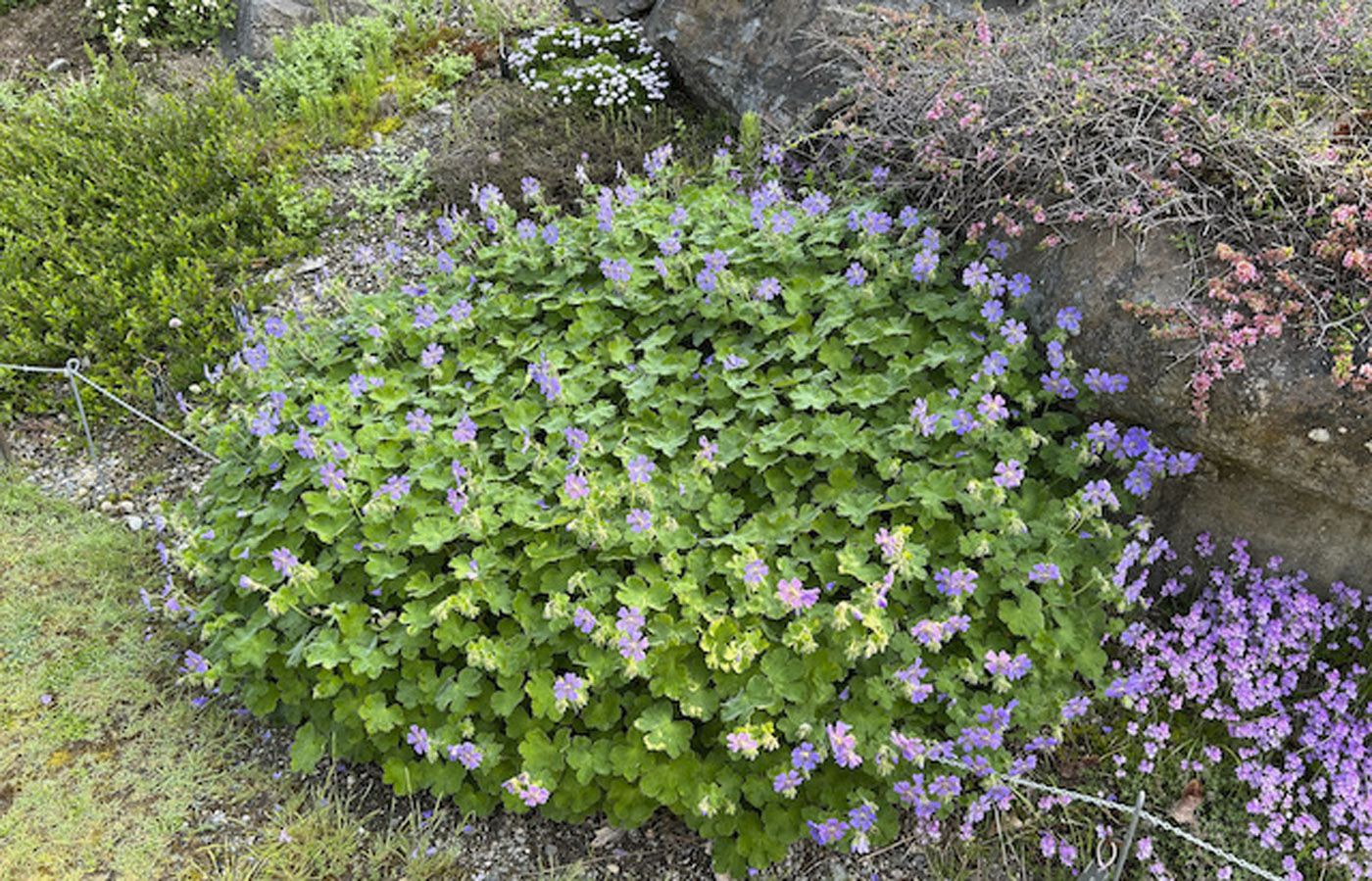
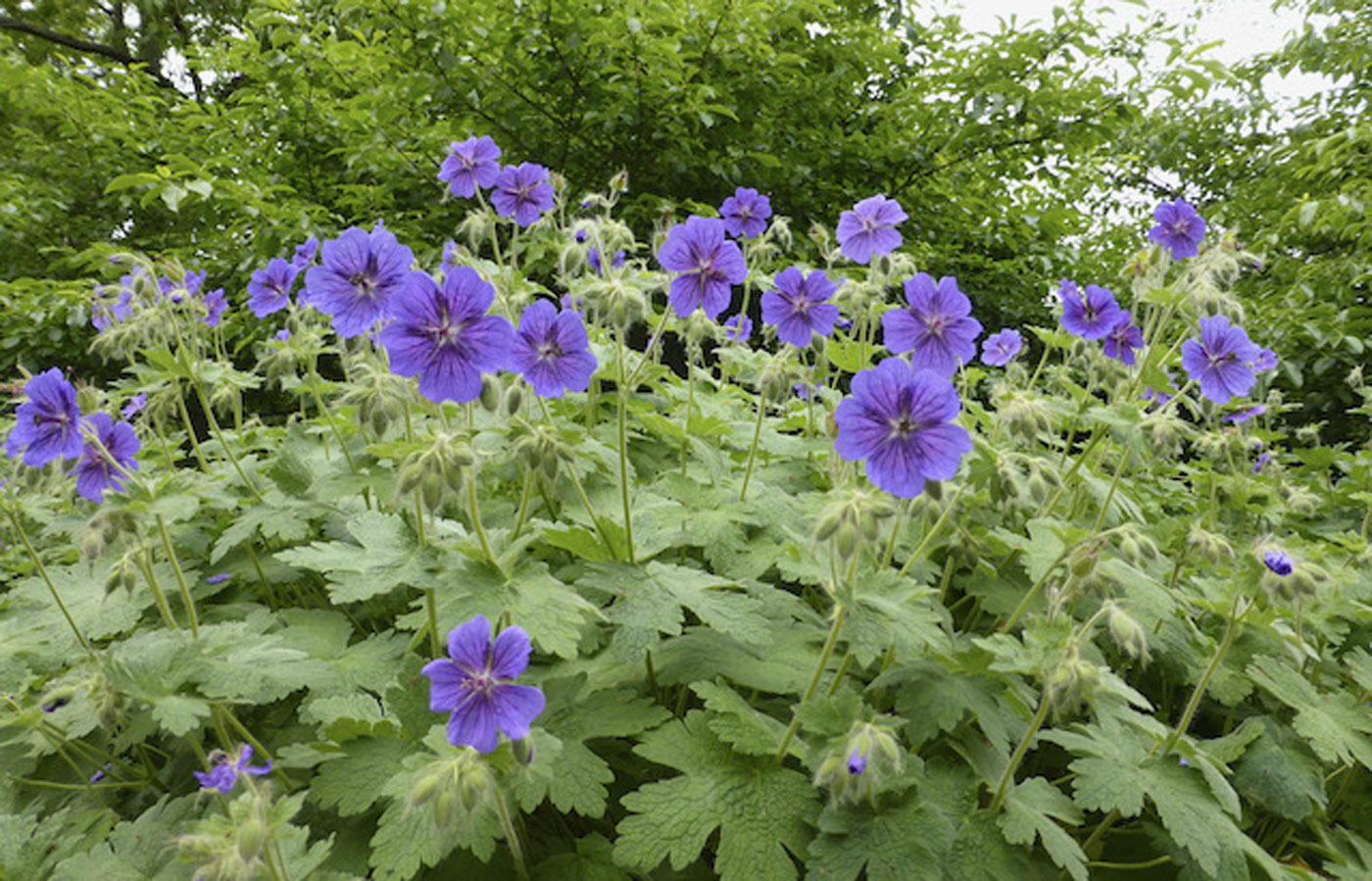



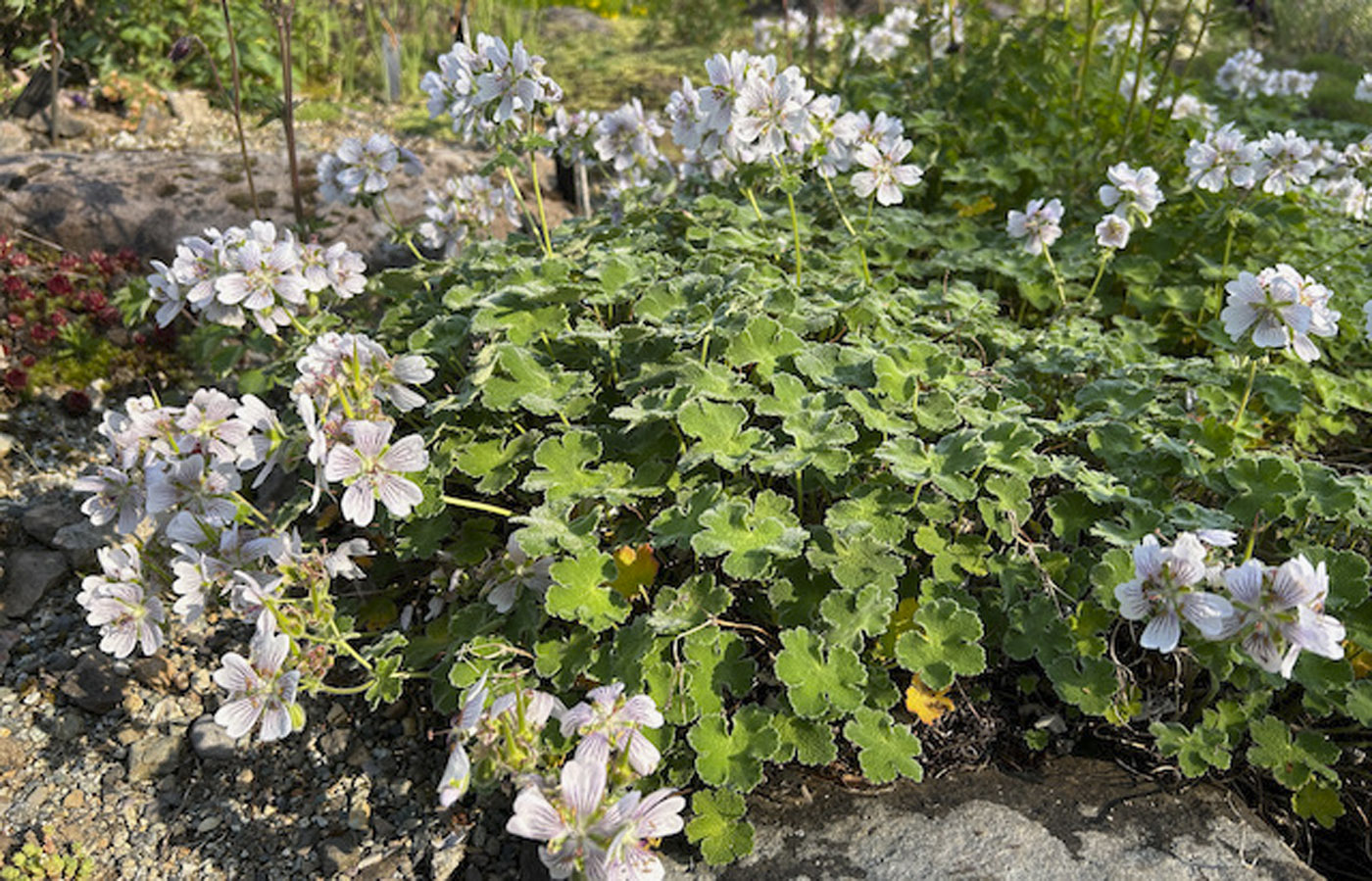
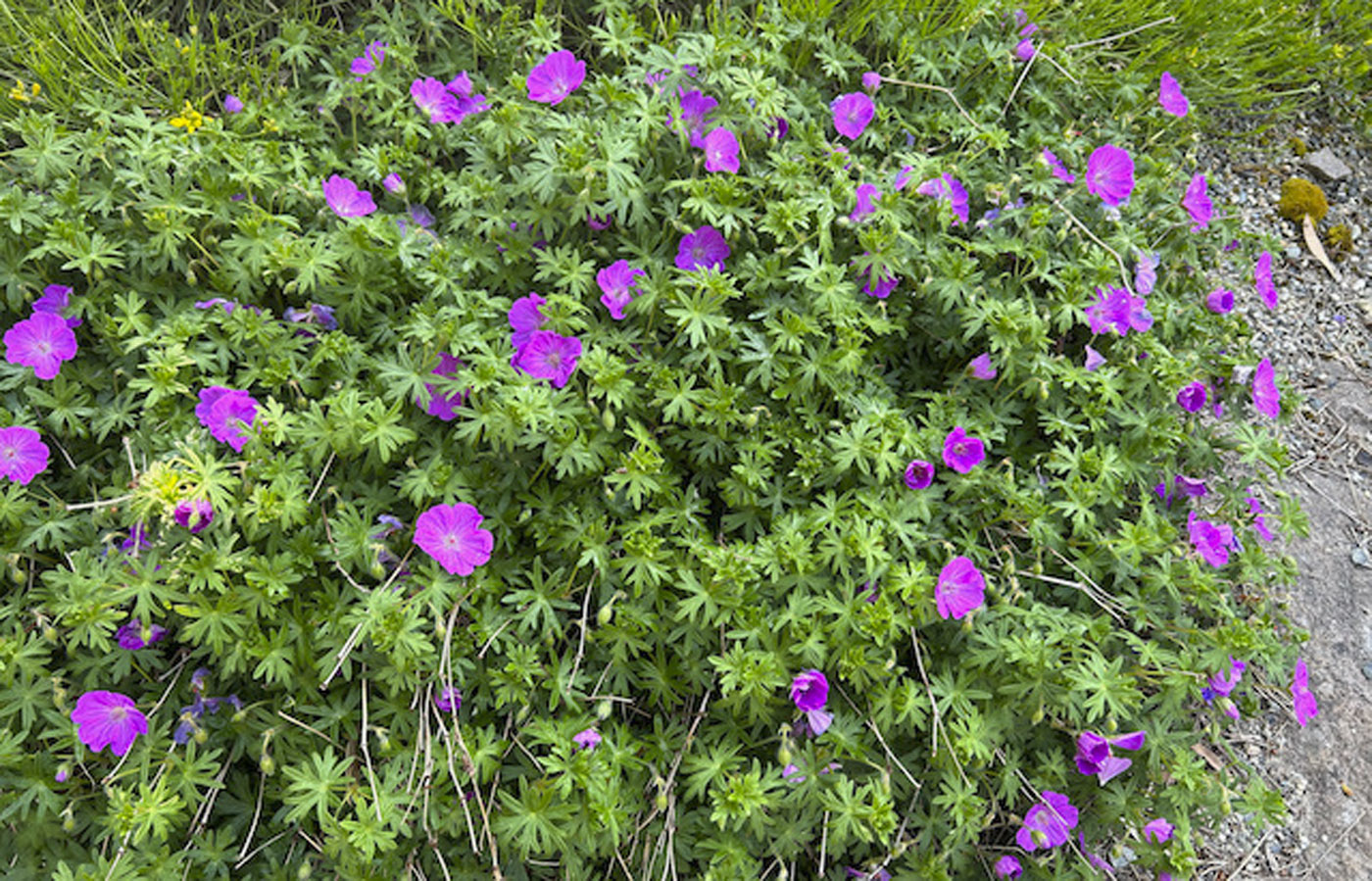


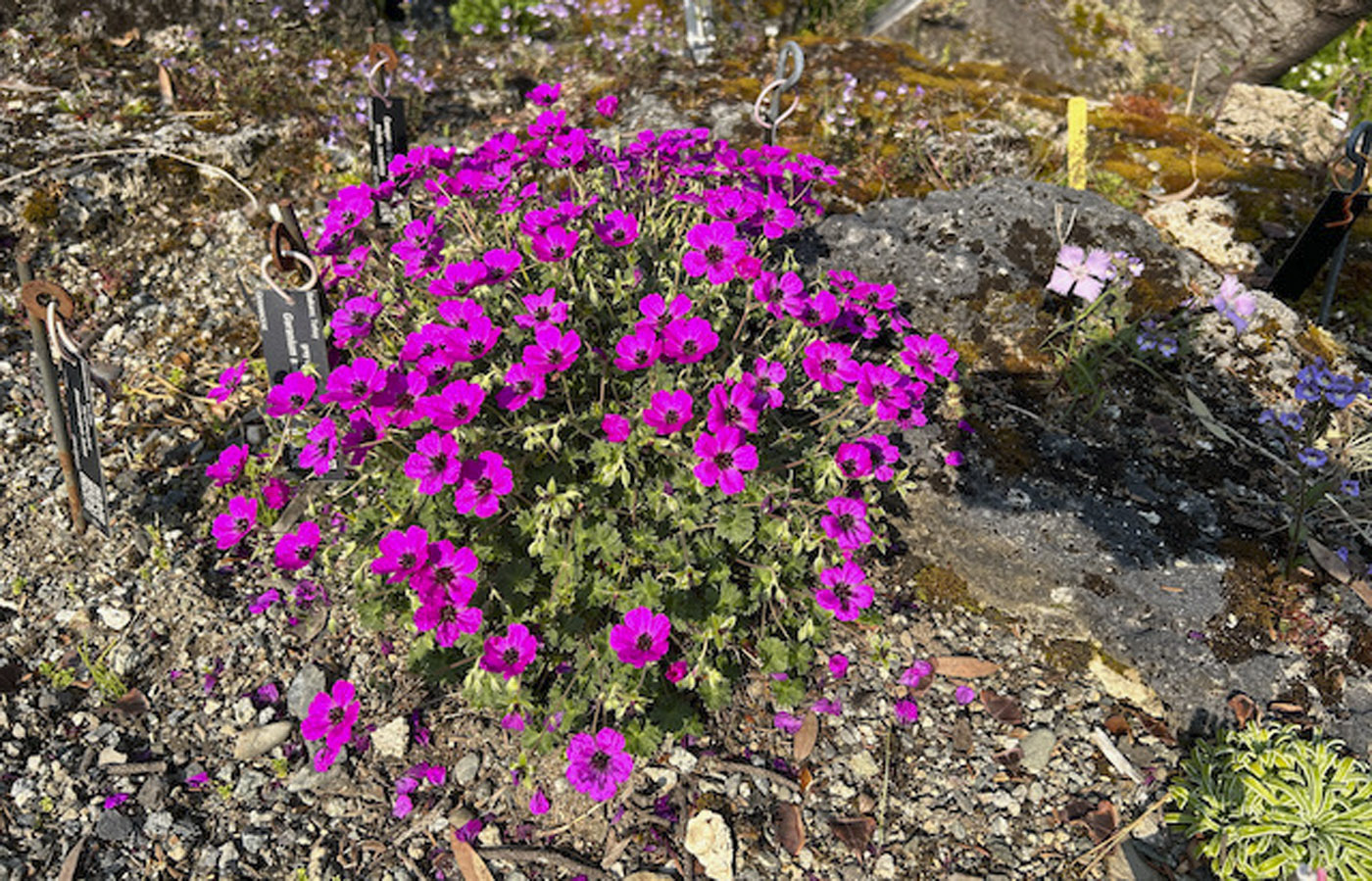


I have been to UBC gardens three or four times- it is one of my favorite places. I love all the detail in this article on geraniums and the botanical Latin as well! Please keep me on your mailing list. I have a large garden in Portland Oregon so I can’t come to UBC as often as I want to.